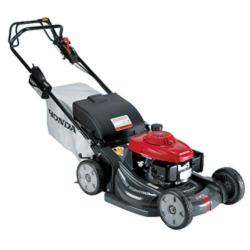Temperatures are warming up, and that means it will soon be time to start mowing. What do you need to do to prepare for the first mow of the season, and what do you need to do to get your grass off to a good start?
Making Sure Your Mower is Ready
A fresh tank of fuel and some clean oil will help the engine run, but when it comes to cut quality, everything is dependent on your mower’s blades. Dull blades will tear grass instead of cutting it, leaving damaged tips that are open to infection.
If you’re sharpening Microcut blades, remember that the flat sides of the lower blade and the sides opposite of the wings on the upper blade do the cutting. The edge of the blade should have a continuous edge that’s as sharp as a butter knife. After sharpening, check the blade balance. If you don’t have a blade balancer, simply hang the blade on a nail. File down the side that tilts down until the blade sits evenly. If the blades are severely worn or have signs of cracking or bending, they need to be replaced.
Making the First Cut
The right cutting height will depend on the grass you have on your lawn. For most turf grasses, this means waiting until it’s three inches tall, then cutting it back to two inches. Other varieties like Zenith zoysia need to be cut back once they reach one-and-a-half inches. This can take a while as the grass will grow slower while coming out of hibernation. As always, limit the cut to 1/3 of the total grass height at a time. If the grass grows past the recommended height, cut part of it with the first mow, then get it to the desired height with a second mow three or more days later.
Even if the grass is growing, the ground needs to be fully thawed before mowing. If there’s freezing weather in the forecast, hold off a few days to let the tuft recover.
Watering
Wait for the grass to wilt a little before the first watering. This will trick the grass into thinking the weather is going to turn dry, forcing it to grow deeper roots that will help it resist heat and droughts in the summer.
Dethatching
A thick layer of thatch can hold in moisture, causing drainage issues and mold growth. It’s good practice to take care of thatch in the fall, but problems may not show up until the spring. If this layer of material is over half an inch thick, removing it now will help the grass throughout the year. Wait until the second or third mowing to give the ground a chance to dry out and new grass to thicken up so it can withstand the action of the dethatcher.
Spring Deadspot
This fungus can hibernate for up to two years, blooming shortly after the grass starts growing in the spring. Infections will create circular patches of brown grass. It can be treated with a fungicide and prevented by managing thatch thickness and keeping the lawn watered during the summer. Overuse of nitrogen when fertilizing in the fall can also encourage fungus growth.
Snow Mold
Pink and gray snow mold can take hold of grass if there were heavy snowfalls early in the winter before the ground had a chance to freeze. The added moisture opens the door for the growth of this mold when temperatures rise.
Like deadspot, the first signs of snow mold pop up as circular patches of brown grass. This is usually coupled with visible mold and, in severe cases, mushrooms. Snow mold starts growing once temperatures are around 30°F and keep growing until temperatures are regularly in the mid-40s for gray snow mold and as high as 60°F for pink snow mold.
This mold can be killed off by helping the grass dry out. Hold off on watering and gently rake matted grass to increase exposure. Keep the grass cut to the recommended height. Fungicides are rarely necessary, but a severe infection can be stopped by applying thiophanate-methyl. Managing thatch, controlling thatch levels and spreading out snow banks can keep this mold from taking hold of your lawn.
Getting Your Mower Ready for Spring
Is your mower due for a new set of blades? Have a few minor things to fix before you put it to work? www.hondalawnparts.com has everything you need to prepare for the season. Built-in parts diagrams and factory descriptions make it easy to use our search engine to find parts, and we can ship your order to any address in the United States or Canada.



